Discrete Phase Flow Trap (Trapper) by Gravity CFD Simulation, ANSYS Fluent Tutorial
$80.00 Student Discount
- The problem numerically simulates the discrete phase trap (TRAPPER) using ANSYS Fluent software.
- We design the 3-D model by the Design Modeler software.
- We Mesh the model by ANSYS Meshing software, and the element number equals 420485.
- We use the Discrete Phase Model (DPM) to define the particle trapping mechanism.
To Order Your Project or benefit from a CFD consultation, contact our experts via email ([email protected]), online support tab, or WhatsApp at +44 7443 197273.
There are some Free Products to check our service quality.
If you want the training video in another language instead of English, ask it via [email protected] after you buy the product.
Description
Description
In this project, an attempt has been made to simulate and analyze the flow of a particle trapping mechanism called the discrete phase trap (TRAPPER) by ANSYS Fluent software. We perform this CFD project and investigate it by CFD analysis.
We deal with discrete Phase flows in various mechanical and engineering systems and their application is increasing. Therefore, in order to have more efficient systems, we must have a complete understanding of such flows.
Multi-phase flows were classified into different groups, one of which is dispersed multiphase flows, which are very common in engineering systems. dispersed multi-phase flows include bubble flow, droplet flow, and particle flow.
In such a flow, one phase is considered the carrier phase, in which particles, bubbles and droplets are dispersed and form other phases. CFD simulation plays a prominent role in optimizing the design of distributed multi-phase flow systems.
The flow containing continuous and dispersed phases enters the computational domain with a speed of 5m/s.
The geometry of this model is designed in the ANSYS design modeler and meshed in ANSYS meshing software. The mesh type used for this geometry is unstructured and the element number is 420485.
Trap Methodology
particle trapping mechanism called the discrete phase trap (TRAPPER) by ANSYS Fluent software.
In order to simulate the particles, the discrete phase model is activated and Saffman lift force and pressure gradient forces are also applied to particles.
Also, since the trapping mechanism mainly works with gravity, gravity has been taken into account.
Trap Conclusion
The contours of, pressure, velocity, particle tracks, etc. are presented. The results show that 45.26% of the particles are trapped. Fluid flow is affected by the particles, and velocities are increased in areas where the particles are denser.
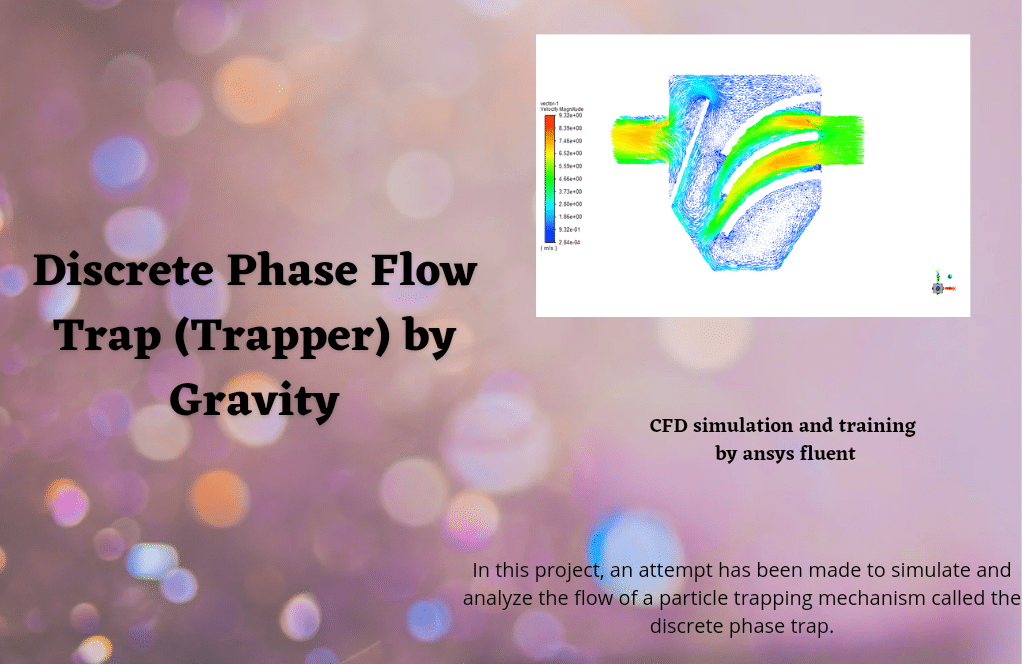
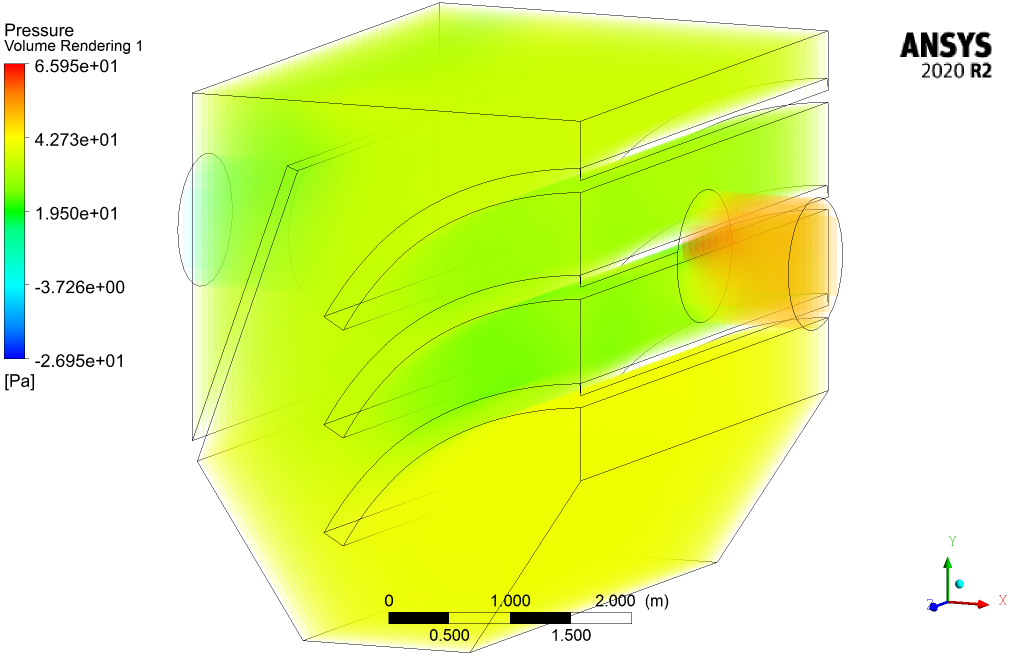
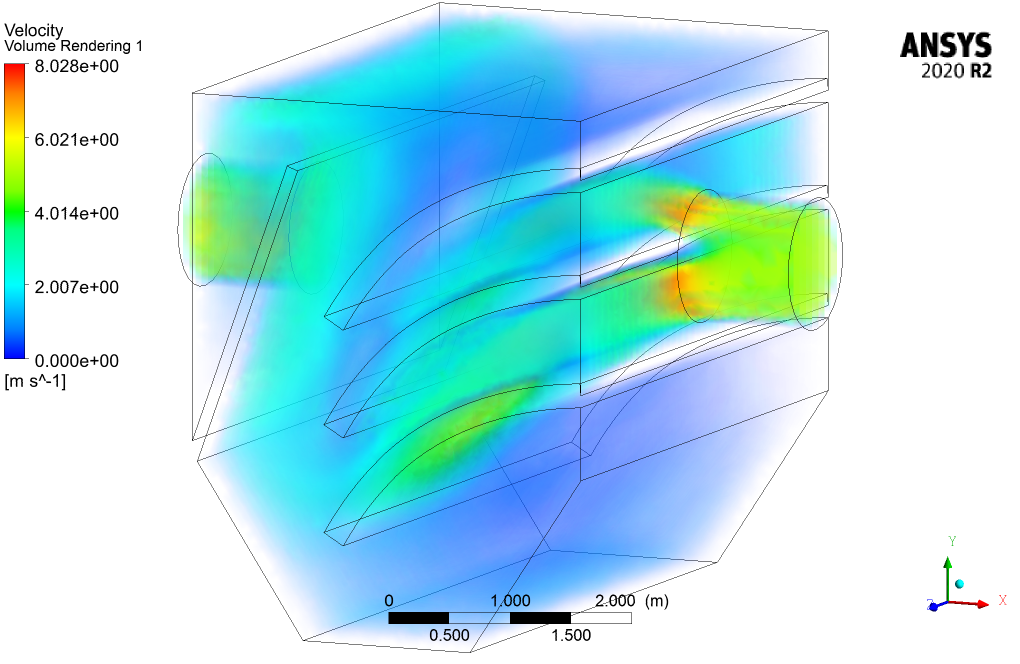
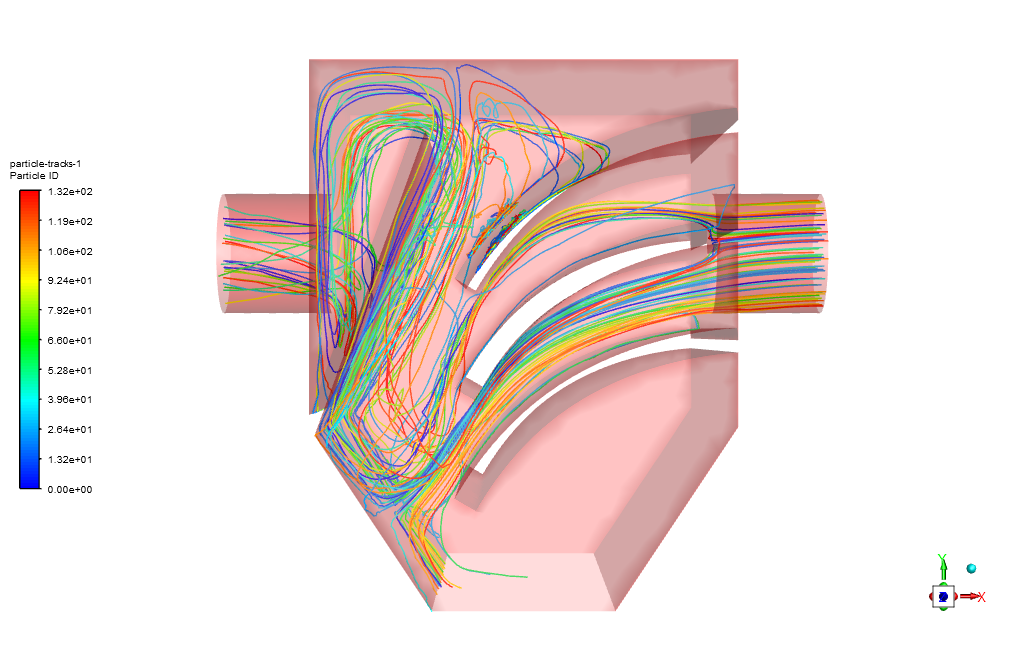
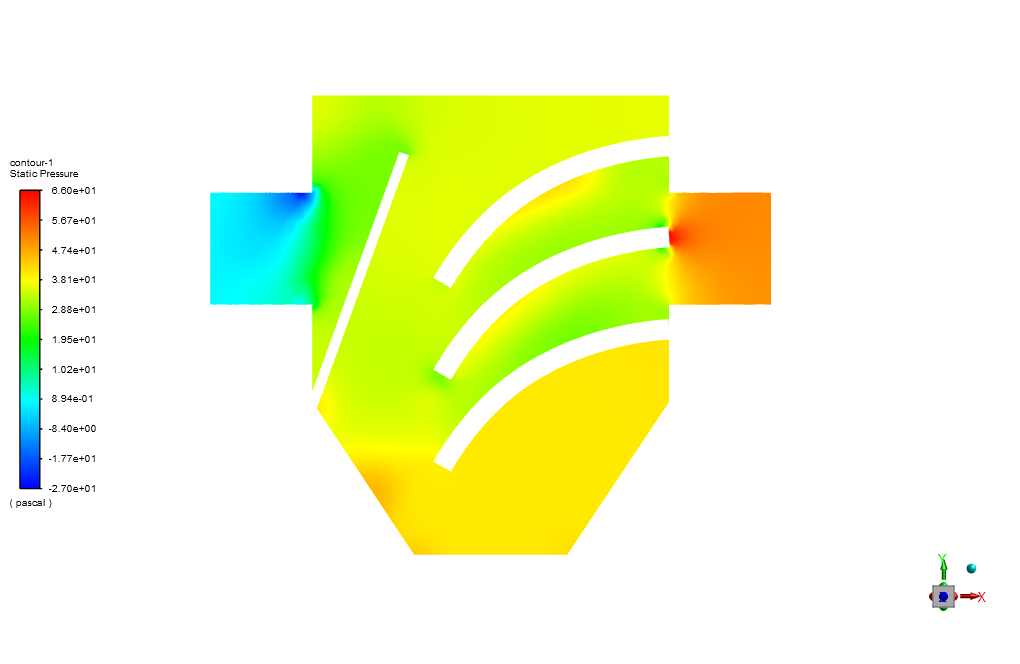
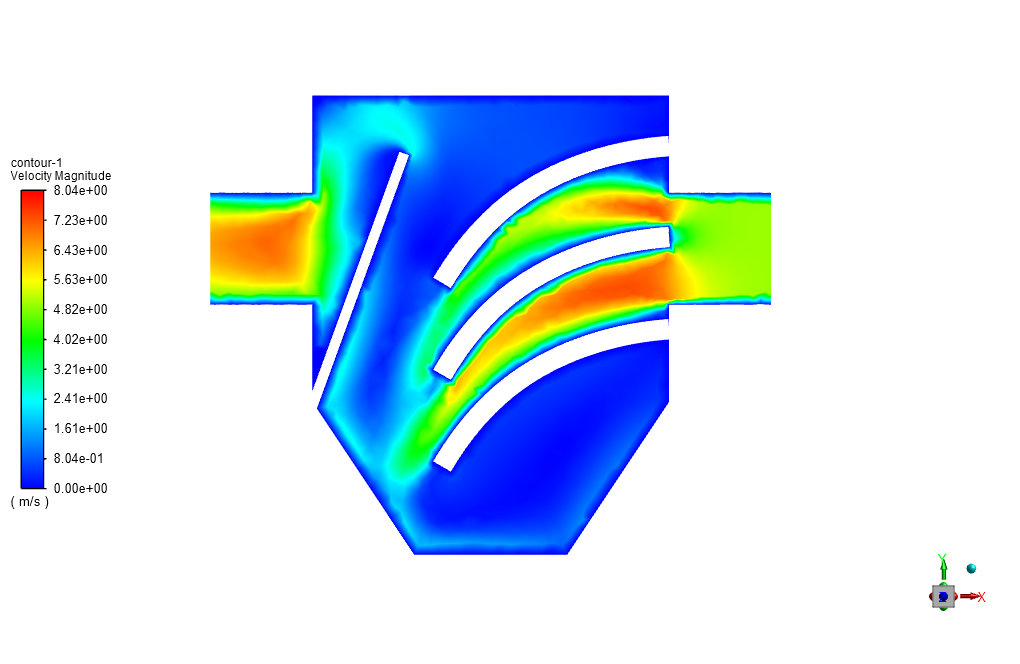
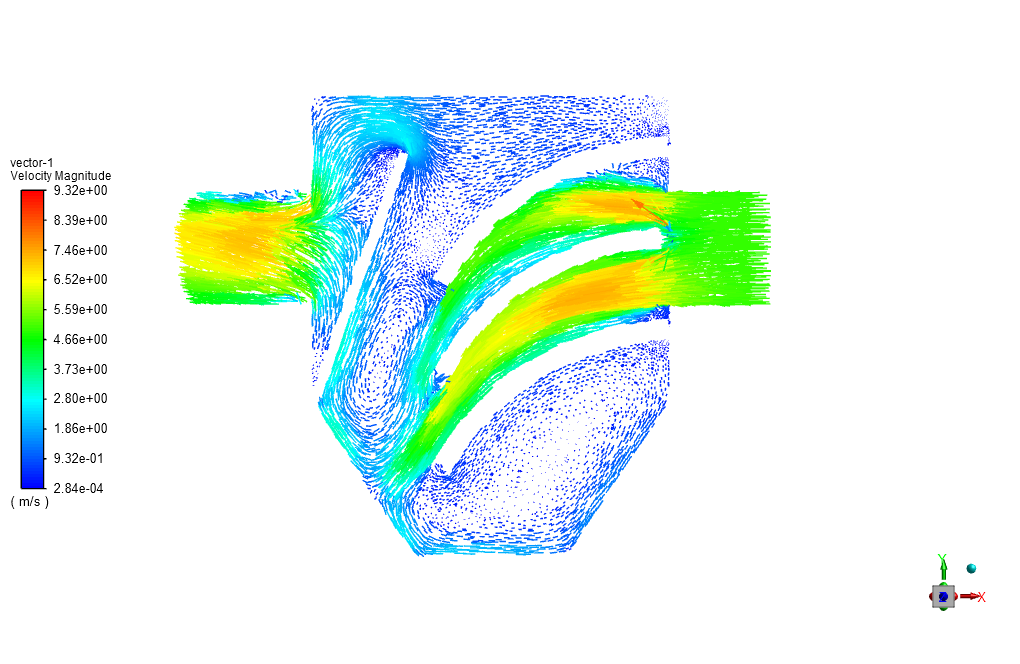

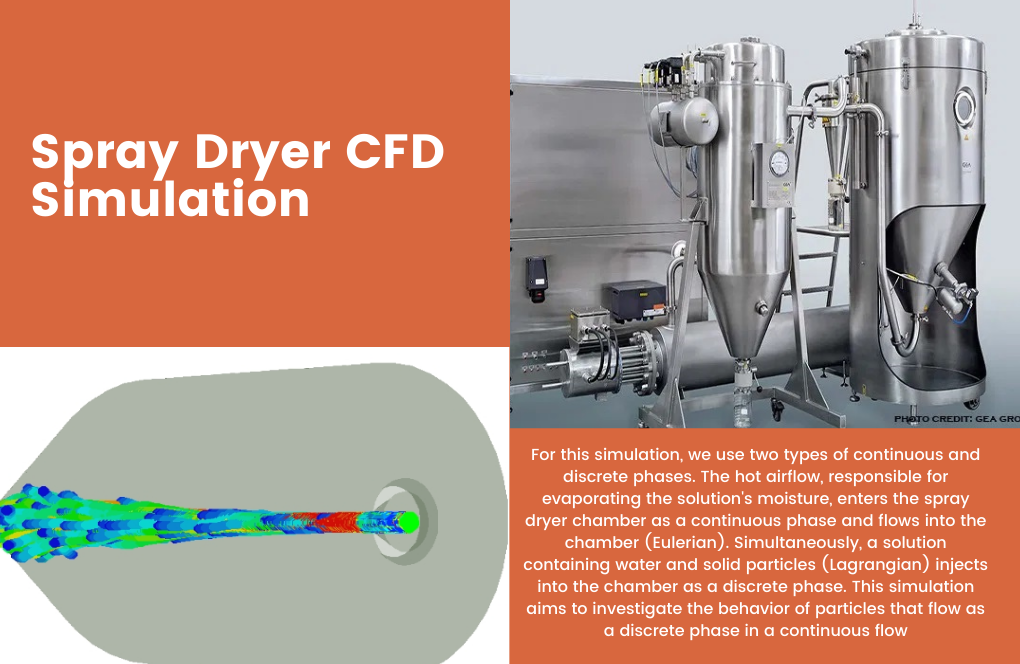


Katelynn Conroy DVM –
This tutorial really helped me understand the discrete phase trap mechanism in detail. I appreciate how well the gravity impact was demonstrated. Are the results indicating that optimizing the design could potentially increase the trapping percentage further?
MR CFD Support –
Thank you for your positive feedback! Yes, the results suggest that with careful design optimization, it is possible to increase the efficiency of the trapping mechanism and potentially trap a higher percentage of the particles.
Aiden Skiles –
I’m impressed with the effectiveness of the TRAPPER in handling particle flows. Is it possible to adjust the model for different particle sizes or does it require a full simulation from scratch for each new size?
MR CFD Support –
Thank you for your positive feedback. Particle trapper simulations are adjustable for different particle sizes by altering the discrete phase model settings and initiating a new simulation run. There’s no need to start from scratch. The model adapts to the new conditions set for the particle size.
Mandy O’Kon –
I’ve gone through the tutorial for ‘Discrete Phase Flow Trap (Trapper) by Gravity CFD Simulation,’ and I’m impressed with the results. The trapping mechanism and the effectiveness of 45.26% trapping efficiency are intriguing. Thanks for the detailed analysis!
MR CFD Support –
Thank you for your positive review! We’re delighted to hear that our tutorial on the discrete phase flow trap was helpful and that you’re satisfied with the content and results. We always strive to provide detailed and practical simulations that can aid in understanding complex systems. If you have further need for learning materials or assistance, feel free to reach out to us!
Verna Turner –
Really impressed with how the discrete phase trap (TRAPPER) simulation reflects the trapping efficiency using ANSYS Fluent software. How was gravity factored into the model to affect particle behavior?
MR CFD Support –
Gravity was accounted for by implementing it as a body force within the simulation. It affects the behavior of the discrete particles, causing them to follow trajectories that ultimately lead some of them to be trapped by the TRAPPER system. Gravity’s influence is significant as it’s the primary force enabling the functionality of the trapping mechanism in the model.
Waylon Conroy –
I just want to say thank you! Your tutorial was amazing and really helped me understand the dynamics of discrete phase flow and the gravity trapping mechanism. The visual representations like particle tracking were especially useful.
MR CFD Support –
Thank you for your kind words! We’re so glad to hear that our tutorial on the discrete phase flow trap by gravity was helpful to you. It’s great to know that the visual aspects, such as particle tracking, enhanced your understanding of the concepts. If you need further assistance or more resources for learning, feel free to reach out to us.
Scottie Parisian –
The tutorial sounds comprehensive, but I wonder if there’s an explanation for the low efficiency? Only 45.26% of particles were trapped. Is there any modification to the design or operating conditions to improve this?
MR CFD Support –
Thank you for your attention to detail! The efficiency might be affected by several parameters such as the geometry of the trap, the inflow velocity, particle sizes, and other operating conditions. Modifying these factors could potentially result in higher trapping efficiency. Optimization studies can help in finding the best setup to improve performance.
Krista Kovacek –
The tutorial was nicely detailed, but I’m curious about how the efficiency might change with different particle sizes or densities. Is there any info on that?
MR CFD Support –
In our tutorial, the focus was on a specific case with given particle sizes and densities. To understand how different particle sizes or densities would affect the efficiency, a series of simulations with variation in these parameters are typically required. Data on variations weren’t provided in this particular analysis but can be done in additional studies or simulations to evaluate the trap’s performance under differing conditions.
Mohamed Koepp –
I just finished the tutorial on Discrete Phase Flow Trap by Gravity and I’m impressed with the detail and concise simulation. The percentage of the trapped particles really emphasized the efficiency of the flow trap design.
MR CFD Support –
Thank you for your positive feedback on our Discrete Phase Flow Trap tutorial! We’re glad to hear that the tutorial was clear and informative, and that the simulation data on particle trapping efficiency was insightful for you. We appreciate your review and are here if you have any more questions or need further assistance.
Clifford Bosco –
I’m pleased with how the discrete phase flow trap simulation results were presented. The detail on particle tracking and the efficiency rate of the trapper you shared speaks to the quality of the tutorials provided by MR CFD Company. Keep up the great work!
MR CFD Support –
Thank you very much for your positive review! We are thrilled to hear that you found the simulation results informative and clearly detailed. MR CFD Company always strives to provide high-quality tutorials, and we’re glad that you find them helpful. If you ever have further insights or require assistance with our learning products, please feel free to reach out to us.
Prof. Adan Swift DDS –
This tutorial was super informative, and I’ve managed to follow the steps for my project. Can’t thank you enough for the clear explanations and quality of the content!
MR CFD Support –
Thank you for your kind words! We’re thrilled to hear that the tutorial was helpful and that your project benefited from it. If you have any more questions or need further assistance in the future, don’t hesitate to reach out. Best of luck with your future CFD endeavors!
Cristobal Hudson –
This product helped me increase the efficiency of my particle trapping mechanisms. The inclusion of forces like Saffman lift and accounting for gravity was particularly insightful!
MR CFD Support –
Thank you for your positive feedback! We’re glad to hear that our tutorial on discrete phase flow traps was helpful in enhancing the efficiency of your particle trapping mechanisms. Understanding the impact of forces like the Saffman lift force and gravity is crucial for accurate CFD simulation, and we’re delighted our product has provided valuable insights.
Dejah Lesch –
Is there any analysis on the effect of different particle sizes on the efficiency of the trap, or does the simulation only focus on a single particle size?
MR CFD Support –
The simulation can accommodate various particle sizes. The effect of different particle sizes on the trap’s efficiency can be analyzed by setting up multiple simulations, each with a specific size set for the discrete particles. However, the provided material does not specify if this approach has been taken, or whether a range of particle sizes was analyzed.
Malika Harber –
The project shows a trapping efficiency of 45.26%. Can we change the parameters of the trap size or the input velocity to improve this efficiency?
MR CFD Support –
Yes, both the trap dimensions and the input flow velocity are among the parameters that could be optimized to potentially improve the trapping efficiency. Modifying these could alter the interaction between the fluid and the particles and lead to better performance.
Leon Toy II –
I’ve just finished going through the ‘Discrete Phase Flow Trap’ tutorial and the clarity of explanations made understanding the process seamless!
MR CFD Support –
Thank you for your positive feedback! We’re glad the tutorial was clear and informative. Our goal is to create resources that make complex simulation concepts accessible and easier to understand. We appreciate your review!
Rickie Senger MD –
I’m amazed by the detail in the CFD project you’ve done. Thanks to your comprehensive tutorial, I was able to understand the principles of the discrete phase trap and how you’ve applied them in ANSYS Fluent.
MR CFD Support –
Thank you so much for your kind words! We’re thrilled to hear that our tutorial was helpful and in-depth for your understanding of discrete phase trap mechanisms in multiphase flows. Your grasp of the principles is vital to us, and we’re glad we could contribute positively to your learning experience. If you have any more questions or need further assistance in future projects, feel free to reach out!
Lilly Quigley –
I’m highly impressed with the capability to model multiphase flows like in the discrete phase flow trap tutorial! Do the results indicate any ways to improve the efficiency of particle trapping beyond 45.26%?
MR CFD Support –
Thank you for your positive feedback! The CFD analysis can indeed provide insights for improving the trapping efficiency. While the current design achieved a 45.26% particle trapping rate, potential optimizations could include altering the trap geometry, adjusting input velocities, or changing particle properties. Each modification can be tested in simulation to predict their effects on trapping efficiency before implementing physical changes.